This article originates from a request by one of the people helping to edit and proofread these articles. Given all he has helped me with, I am happy to oblige his request. In this article we will examine the rules for Gun Duels (GD), how they are executed, and resolved.
What Are They?
GDs are generally declared by the ATTACKER. There is a singular instance when the DEFENDER may declare the GD. If the ATTACKER declares a Bounding First Fire attack before spending any Movement Points (MP), the DEFENDER may declare a GD but only with the units being attacked by the Bounding First Fire (C5.33). Once a GD has been legally declared no other units may attempt to shoot the Moving vehicle until the GD has been resolved (e.g., both sides have taken their shots as part of the GD). It’s also important to note a GD is not limited to Ordnance. It is possible to declare a GD with any legal attack as long as the requirements are met. For the rest of this article we will primarily speak about ATTACKER declared GDs. The same principles apply equally to a DEFENDER declared GD.
To declare a GD, the DEFENDER must declare a Defensive First Fire shot vs which the ATTACKER may declare a GD as B1F. A vehicle conducting an Overrun, which must change TCA/VCA to fire back, or which is attacked by a concealed Unit may not declare a GD.
How Are They Resolved?
The ATTACKER’s vehicle may attempt to fire its MA or any other weapons/Passengers/Riders capable of attacking as part of the GD. Each side will count up all the applicable Firer-Based and Acquisition DRMs applicable to their shot to get their Gun Duel DRM’s. The one with the lowest total Gun Duel DRM’s shoots first. In the case of a tie, the lowest final To Hit DR will go first. The final To Hit DR will include the DR plus all applicable modifiers to the shot (Firer- and Target-Based DRMs). If the DRMs and the To Hit DRs are the same the shots take place simultaneously. If one shot occurs first and eliminates, Shocks, Stuns, or breaks the other participant, any potential return shot is voided.
Firer-Based DRMs are found in table C5 on the QRDC. Only these are counted when determining who shoots first, even though Target-Based DRMs (found in the C6 table on the QRDC) may also ultimately affect the shot. It is also worth noting the +1 DRM for a Stabilized Gun (Case C4) does not apply to this calculation even though it will affect the To Hit DR. The same goes for doubling of the lower die of the To Hit DR when firing a non-Stabilized Gun. For the purposes of determining who shoots first all non-Ordnance/SW are treated as Ordnance. We will examine these in examples later in this article.
One last consideration before moving on to the examples is the timing of any Covered Arc changes occurring as part of a GD. Any Covered Arc changes by the DEFENDER are made BEFORE the shot only if the DEFENDER’s total Gun Duel DRMs are less than or equal to the ATTACKER’s Gun Duel DRMs. Otherwise, necessary DEFENDER Covered Arc changes are made AFTER the shot and only if it survives the ATTACKER’s Bounding First Fire shot. It is important to note in the case of TIED DRM’s the DEFENDER’s Covered Arc change would take place BEFORE the To Hit DRs to see who might roll lower and thus shoot first. Turning before the DR is an important thing to consider if the frontal armor of an AFV is substantially better than the rear or side armor.
Example 1
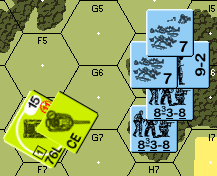
It is the start of the American MPh. At the beginning of its MPh the American AFV declares a Bounding First Fire shot at the broken units in H5 before spending an MP. Trying to save his units from being marked DM, the German player declares a GD from his 9-2 stack hoping to stun/STUN the vehicle’s crew before the shot and negating the attack. Per C2.2401, only the broken stack–which isn’t capable of fire–can declare the GD so there is nothing the German player can do.1 Had the American AFV attacked the 9 -2 stack instead, the German could use a Defender-declared GD.2 The German’s total DRMs would be -2 (Leadership). The American DRMs would be +4 (+2 Case C, +2 Case B). The German player would shoot first against the exposed crew.
Example 2
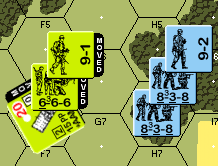
It is the American MPh. The American halftrack moved to this position before Stopping. The German DEFENDER declares Defensive First Fire against the exposed Crew and Passengers. The American player declares a GD with the MA and Passengers. As above, the German DRMs are -2 (Case I). The American DRMs are +4 (+2 Case B, +3 Case C NT/PRC, -1 Leadership). The German will shoot first. Assuming it survives the 16 flat shot unbroken and CE, the American player will be able to return fire before any other unit could engage the ht and its Passengers.
Example 3
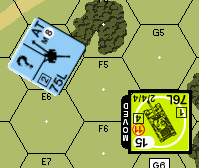
During the American MPh, the German player reveals a HIP Gun and announces his intention to Defensive First Fire against the American AFV. Despite otherwise qualifying to declare a GD, the American player cannot declare a GD against the concealed Gun. If the American AFV survives the initial shot, it may declare a Bounding First Fire against the Gun.
Example 4
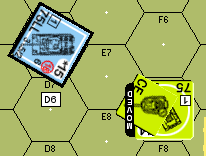
It is the American MPh. The American AFV moved into position to take a flanking shot and Stopped. Sensing his peril, the German player declares a Defensive First Fire shot against the American AFV. Assume he elects to pivot the whole AFV. In that case, he would pay Non-Turret DRM. His total DRM would be +5 (Case A +4 for a two hex-spine pivot, +1 Case I). The American DRMs would normally be +4 (Case B +2, Case C +2). However, note the white background color in the American ROF box. Buried in the US Multi-Applicable Vehicle Notes in Chapter H is vehicle Note R which says a white ROF background halves (FRD) Firer-Based To Hit DRM before adding any Acquisition DRM for GD calculations only. For the purposes of determining who goes first, the American AFV’s DRMs are considered to be +2, even though its actual Firer-Based TH DRMs are +4. Note again Case J (Moving Vehicular Target), Case L (Point Blank), and Case P (Target Size) are not applicable to the GD DRM calculations as they are Target-Based DRM’s even though they will affect the final To Hit DR. Even had the German AFV elected to turn just the turret, it’s Firer-Based DRM’s would have been +4 (Case A +3, Case I) and the American AFV would still win. Given the American is shooting first, the Panther will not be able to change its CA and if it is hit, it will be attacked through the rear aspect. The total TH DRMs for the American are +2 (+2 case C, +2 Case B, -1 Case L, -1 Case P). This gives a final TH # of 10 with a +2 DRM to the roll. On an original DR less than or equal to 8 the American AFV will hit the Panther in its less than stellar 6 armor factor rear. Equally important, Note R also says the rapid firing nature of these white ROF background Guns entitles them the possibility of Multiple Hits (C3.8). Should the Panther be eliminated or Shocked, its return shot would be voided.
Example 5
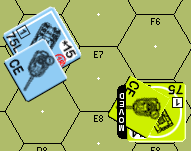
This is basically the same as the situation above. Again, the American has moved to get a flanking shot and the German declares Defensive First Fire. The American GD DRMs remain a +2 due to the white ROF background. This time however, the German DRMs are also +2 (Case A ST +2). In this case, the DRMs are tied and the lowest final To Hit DR will actually shoot first (German DRMs are +2 Case A, +2 Case J, -1 Case L, -1 Case P; American DRMs +2 Case B, +2 Case C, -1 Case L, -1 Case P). If the final To Hit DR’s are also tied, the shots will occur simultaneously. In either case, since the DRMs are equal, the Panther’s turret will be turned to face the American AFV BEFORE the shot occurs. Should the American win or survive to take a shot and hit the upper aspect of the Panther, it would be against the Panther’s stout 14 turret armor. Should the Panther roll the lower final To Hit DR and roll low enough to actually hit, the American AFV’s return attack would be voided if it is Shocked or eliminated. If both final TH DR’s tie and they are low enough to actually hit, they can simultaneously eliminate/Shock one another. When it comes to the lower final TH DR dice off, if a player shoots depletable ammunition and does not get the ammunition he would roll again giving him a second chance to roll low.
Example 6
Refer to the example 5 illustration. Imagine the German AFV also has a -1 Target Acquisition. Its Firer-Based DRMs are still +2 but now we add the Acquisition (-1) to the GD calculation and the Panther wins with a final GD DRM of +1. Alternatively, the Panther could instead elect to turn the VCA for a final GD DRM of +2. As the GD DRMs are tied, the Panther’s VCA would turn to face the American AFV and suddenly the American shot is facing circle 18 armor and a roll off to see if he can bounce a shot before a fiery trip to Valhalla.
Conclusion
As always, I hope you find this article useful. Should you find an error or need clarification on some aspect, please reach out and let me know. If there is a topic you would like to see covered please let me know that too. As demonstrated here, I just might take you up on it. Until next time. — jim
version 1.1
An AFV wishes to BFF at a stack of broken units the start of its movement phase for 0 MP in accordance with C5.33. Sitting beside the broken units and in LOS of the BFF AFV is another unit friendly to the broken stack. May the third unit declare a Gun Duel vs. the BFF vehicle or is the Gun Duel restricted to only the AFV and broken units?
A. Third parties cannot intervene
A vehicle is in bypass of an Infantry Unit in a woods hex. The vehicle declares Bounding First Fire against the Infantry Unit prior to expending any MP. Can the Infantry Unit declare a Gun Duel? If the Infantry Unit wins the Gun Duel can it use CC Reaction Fire (D7.21) as its attack?
A. Yes, if not held in Melee (e.g., vehicle was in Motion). Yes. {4}
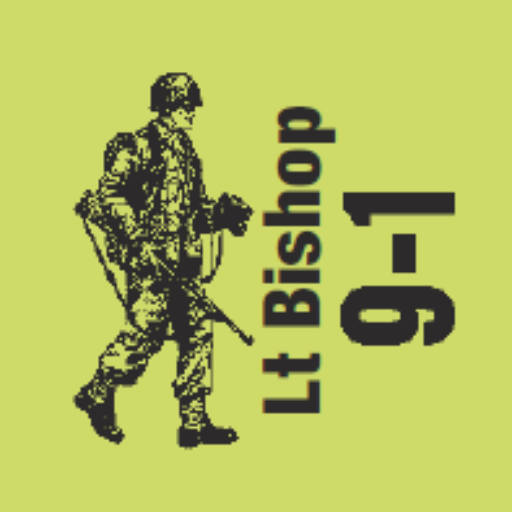

Thanks for this Jim.
Great points about US MAVN R.
I didn’t knew that you cannot GD vs a concealed unit! Another reason to try to be concealed always, even with AFV.
I am forwarding this to a (newish) chap with whom I am going to start a guns vs AFVs scenario with!
Excellent examples. Greatly appreciated. I wish I had read this article before playing “Under Noel Trees” the outcome would have been different.
Posting here after reading the article and the version recently provided at the Battleschool site. I’ve probably lost more Shermans over the years than I should have – hopefully that will change in the future. I’m assuming this option is not applicable should one or both of the units involved are armed with a flamethrower since it doesn’t use the TH/TK tables.
No, I think they would still have to consider the DRMs for purposes of who shoots first. Per C2.2401, “The order of fire for non-ordnance/SW is determined as if it were ordnance [EXC: TH Case A can apply to non-ordnance/SW only if mounted-on/aboard a vehicle that is changing CA; all such non-turret-mounted fire is considered NT for purposes of TH Case C, and A.5 applies to any type of FG].” The DRMs may not apply to the TK DR but they are certainly part of the “who shoots first” question.